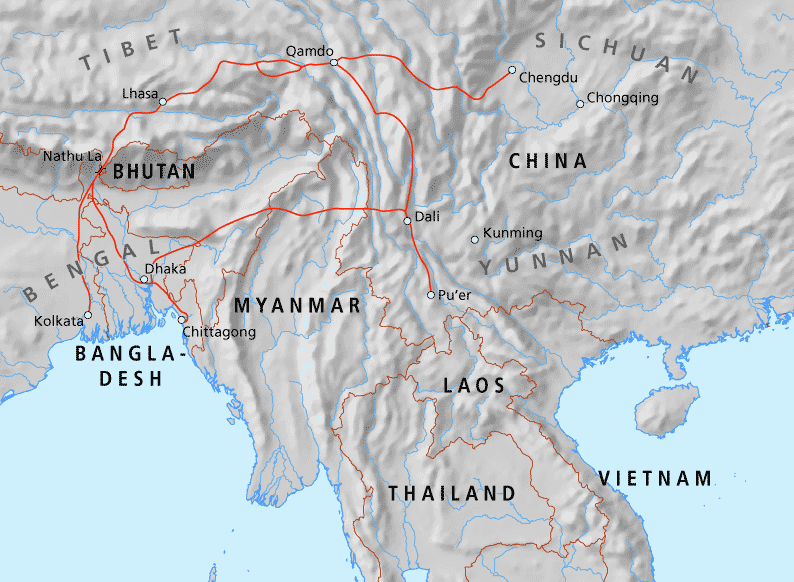The Ancient Tea Horse Road, sometimes referred to as the Southern Silk Road, is a millennia-old network of paths that connect Lhasa, the capital of Tibet, to the Yunnan and Sichuan provinces of South-Western China. Since the 6th century, the unforgiving and harsh route was used to trade all kinds of goods, but most notably bricks of tea for horses, hence its name.

The trading began when the Tibetan people became interested in tea during the Tang Dynasty (618-907) and later the Song Dynasty (960-1279), but the Tibetan climate wasn’t suitable to grow tea themselves. It is believed that Sichuan and Yunnan are two of the first tea producing regions in the world, and as such the region held, and still holds, an important trading position when it comes to tea. The Song dynasty was in need for prime horses to use in their wars against the nomadic tribes of Northern China. So, in a time where tea was worth more than porcelain and silk, a 60kg cargo of brick tea would fetch a merchant a magnificent steed, making the Tea Horse Road a lucrative venture.
Both men and women traveled the road either on foot or on horseback, carrying with them up to 90kg in cargo (with the aid of a mule or a yak), and it took them anywhere from three to six months to complete the journey. Trading posts naturally sprung up all across the route. Unsurprisingly however, not every traveler or merchant completed the journey, and considering the altitude and natural snowstorms that occurred in the region, a significant number of people lost their lives on the Tea Horse Road. Other products that were traded on the trading route worth mentioning were salt for tea, ivory for gold, and it is argued that the road played a substantial role in spreading the Buddhist religion throughout the region.
These days, although some remnants remain, most of the Tea Horse Road has been abandoned for decades. However, there is construction underway in the Tea Horse Road region to build the Sichuan-Tibet railway, a 1,629 km track that will connect Chengdu (capital of Sichuan) to Lhasa and significantly reduce travel times between the two destinations.



